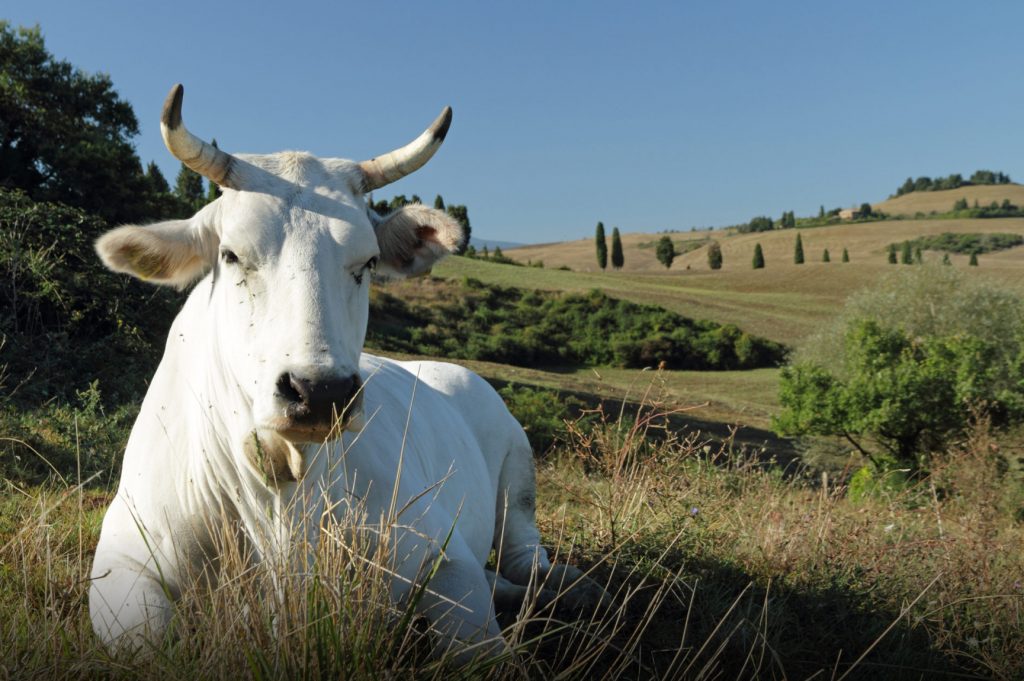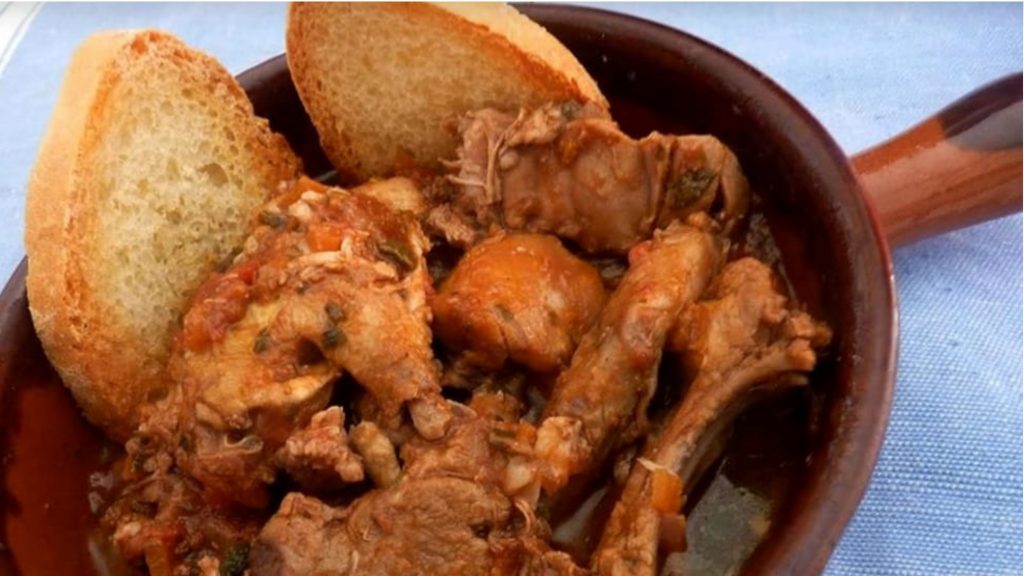I am re-reading a book. This will be my third reading. There are only one or two books I have re-read in my life. This one is entitled “The Tuscan Year – life and food in an Italian valley” by Elizabeth Romer. It was written in 1984. It is still in print. I first read it a number of years before we even thought of moving here. I brought my copy along when we moved and re-read it after moving. It was only then that I realized I now live within just a few miles of where this takes place. The book is divided into the months of the year and chronicles the lives of a family of land owners in Tuscany. This farm was just near the border with Umbria. The way of life would have been the same in both regions. They were self sufficient. They grew all they needed, cured their own prosciutto, made their own pecorino cheese, raised wheat and milled it, and made bread in a communal oven, once a week. The life fascinates me.
“The only animal whose death the old Tuscan people really mourned was the ox, the beautiful white beast that drew the plough; they were mourned almost as if they were human because they too need nine months in the womb before they are ready to be born.” from the book.

The author was an Egyptologist, British, and wanted a place between England and Egypt. She rented a house on the farm of the Cerottis. She made friends with Silvana, the wife and matriarch. By doing so she could sit and observe their way of life. There are recipes at the end of each chapter. For a cook and Italianophile it is a wonderful read.
~~~~~~
The first chapter, January, is all about the dead of winter; the chores that are done in this month – the butchering of the pigs and the making of prosciutti, salami and sausages. It is about how they cooked and were nourished when there was no garden to speak of. These were the bitter months when they didn’t work in the fields. The book says during this time their lives were very like their ancestors. These forbears would have spent the time making and repairing baskets for collection of olives and grapes. They would have made wooden sleds and carts to be drawn by the oxen. The women would have spun woolen cloth and embroidered their trousseaus. They decorated all their linen sheets and nightgowns with lace and embroidery. Nowadays the men repair farm equipment and tools. Silvana knits socks and shawls, using wool from their sheep. The book said she used two intertwined wools, one light, one dark so she could see in the firelight.
As I said there are many recipes in each chapter. This particular passage I loved:
“The Scottiglia is made with a mixture of meats and cooked with the odori, carrot, celery, and onion, then served on a slice of bread that has been toasted and rubbed with garlic. The dish originated in harder times when there was not much meat to be eaten and all the neighbors would crowd into one house for the evening, bringing with them whatever piece of meat they could obtain: a piece of rabbit or prosciutto, some chicken, a little veal or maybe some tripe, very often game of some description. Then the meat would all be cooked up together in the large cauldron and flavored with the usual vegetables and wine. The oldest recipes for this dish specify that absolutely no oil was to be used in the preparation of the stew, maybe because the meat was fattier in those times. While the meat was cooking what is known as the veglia would take place: the people, usually all from a small hamlet…would sit around the fire and give recitations of Dante and verses that the men had made up themselves. These would very often contain veiled references to the girl who had caught their eye, and in this way the cold evenings passed in a pleasant manner.”

The Scottiglia is served in a bowl with a toasted piece of bread on the bottom, rubbed with garlic. Juice is ladled on the bread and then a helping of meat.
~~~~~~
I think I may include an excerpt now and then, in this journal. This January chapter is so evocative of times gone by and cold, dark winters which we still endure but I am reminded it is nothing like they had to endure back then. Then, death was very near and if you weren’t prepared, you could die.
